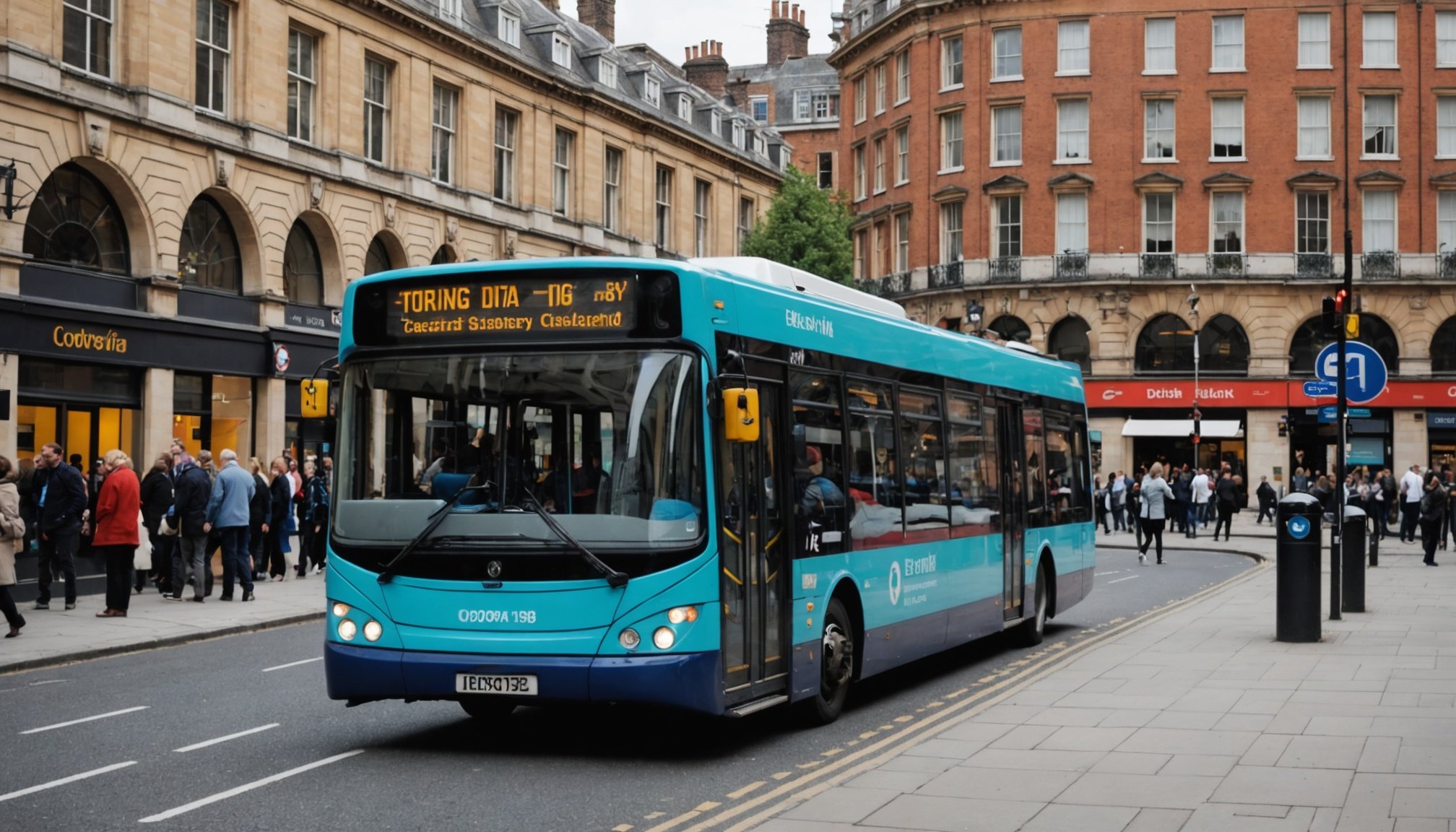Introduction to Big Data in Public Transportation
In today’s rapidly evolving landscape, big data is proving indispensable to urban mobility and public transportation systems, particularly in UK cities. Its significance lies in its ability to transform raw data into actionable insights. This data-driven approach fosters efficient travel, reduced congestion, and improved user experiences.
The Current State of UK Public Transportation
In the UK, public transportation infrastructure is a centralized aspect of urban mobility. However, it faces hurdles like congestion and scheduling inefficiencies. Implementing robust data frameworks can streamline operations and enhance service delivery.
In parallel : Transforming uk real estate: enhancing property purchases through immersive virtual tours
Leveraging Data for Enhanced Systems
Integrating data analysis into public transport routines offers numerous advantages. By examining patterns in commuter behaviour and traffic flows, authorities can optimize routes and schedules. For example, dynamic scheduling can adapt to peak travel times, improving overall efficiency. Furthermore, real-time data enables rapid response to delays, minimizing commuter disruptions. Enhanced systems are well-equipped to manage the increasing demands of urban populations. This not only benefits municipalities through cost savings but also elevates the quality of user experience, fostering loyalty and satisfaction.
Case Studies of Successful Implementations
The utilization of big data in UK urban transport has led to numerous successful case studies. Each case study provides compelling insights that demonstrate the effectiveness of big data applications.
Also to discover : Unwind in paradise: top vacation rentals in st barts
London’s Transport for London (TfL) Initiatives
Transport for London (TfL) stands out as a leader in big data initiatives. By leveraging data from Oyster cards and mobile payment systems, they have significantly improved service delivery and reduced congestion. Their ability to predict passenger loads and adjust services accordingly exemplifies the power of big data in urban transportation.
Manchester’s Smart Transport Strategies
Manchester employs a smart transport approach, using data to enhance mobility options across the city. By analysing traffic patterns and public transport usage, Manchester has optimized its bus networks and reduced commuter wait times. This data-driven strategy not only improves efficiency but also elevates the commuting experience.
Case Study: Nottingham’s Innovative Data Use
Nottingham’s innovative use of data includes analysing ticket sales and travel patterns to personalise commuter experiences. This proactive strategy enhances scheduling and route planning, showcasing how data can drive operational improvements and boost user satisfaction.
These case studies highlight transformative impacts, offering valuable lessons learned for future implementations.
Benefits of Leveraging Big Data
Adopting big data within public transportation systems can notably enhance operational efficiency. By analysing real-time data, transportation authorities can swiftly make informed adjustments. This agility leads to optimised routes and schedules, promising smoother rides for commuters. Additionally, real-time data empowers operators to address delays proficiently, reducing passenger wait times and frustrations.
Another crucial benefit is the significant improvement in user experience. Big data facilitates personalised services, tailoring the transportation experience to meet individual commuter needs. For instance, predictive analytics can anticipate peak times and manage passenger loads, ensuring a more comfortable travel environment. Responding to user preferences not only elevates satisfaction but also fosters lasting loyalty to public transport systems.
Moreover, big data offers extensive cost-saving potential for municipalities. Efficient resource management, enabled by comprehensive data analysis, can result in reduced operational costs. By reallocating resources based on demand patterns, authorities can minimise unnecessary expenditures. This strategic approach not only eases budget constraints but also supports sustainable urban transport growth. With these benefits, big data proves to be a indispensable tool in revolutionising public transportation.
Potential Challenges in Implementing Big Data Solutions
Incorporating big data within public transportation systems presents considerable challenges. One of the main concerns is data privacy and security. With the capture and analysis of vast volumes of user data, keeping information secure and respecting privacy rights is paramount. Effective encryption methods and rigorous privacy protocols are essential to maintain trust among users.
Additionally, the need for infrastructure upgrades poses a significant hurdle. To efficiently process and leverage big data, existing systems often require costly enhancements. These upgrades can include installing advanced data analytics platforms and improving network capabilities to handle real-time data streams.
Resistance from stakeholders can also hinder progress in adopting big data solutions. Some stakeholders may be wary due to potential disruptions or lack of understanding about the benefits. Overcoming this requires clear communication and demonstrations of how data solutions can address current inefficiencies.
To mitigate these challenges, it is crucial for urban transport authorities to collaborate closely with technology providers. Together, they can develop user-friendly data systems that enhance efficiency without sacrificing security. Resources must be dedicated to training personnel and ensuring stakeholders are informed of the transformative potential of big data.
Future Trends in Urban Mobility
In the dynamic realm of urban mobility, future trends hold significant promise for reshaping public transportation innovations. Emerging technologies are central to this evolution, with artificial intelligence and machine learning poised to revolutionise transport systems. These technologies enable precise data analysis, offering insights that allow for real-time adaptations and predictive maintenance. By leveraging this knowledge, transportation networks can become more efficient and reliable.
As urban environments grow, there is a notable push towards multimodal transport solutions. This integration encourages seamless transitions between different modes of transport, such as combining cycling with bus or train travel. Embracing such solutions enhances connectivity and reduces reliance on individual car usage, promoting environmental benefits. The flexibility presented by multimodal approaches caters to diverse commuter needs.
For sustainable transport initiatives to flourish, policy recommendations are vital. Government support is essential in fostering collaborations between private and public sectors to develop robust frameworks. Such support can drive innovation and ensure urban transport systems remain responsive to the needs of growing populations. By prioritising sustainability, cities can balance modernisation with environmental conservation, shaping an eco-friendly future. This aligns with global goals for reducing urban emissions and enhancing quality of life.
Expert Opinions and Policy Recommendations
In the domain of urban transport, insights from experts are invaluable in understanding and leveraging big data. Experts consistently highlight the transformative potential of data-driven decision-making in enhancing public transportation.
Insights from Experts
Expert insights reveal that integrating big data improves operational efficiency and enhances user satisfaction. By utilising precise analytics, transportation systems can foresee demand fluctuations, thus refining schedules and reducing delays. These enhancements lead to a more seamless commuter experience.
Recommended Frameworks
Policy recommendations suggest developing structured frameworks that support data integration across transport systems. Prioritising interoperability between different data technologies enables efficient data flow, sustaining long-term improvements in public services.
Collaborative Strategies
Effective urban transport improvements hinge on fostering collaboration between government entities, private companies, and technology providers. This engagement encourages the sharing of best practices and innovative solutions to common challenges. By working together, stakeholders can efficiently tackle issues like infrastructure limitations and privacy concerns, ensuring the potential of big data in public transportation is fully realised. Encouragement from engaged policy-makers facilitates the continuous evolution of transport systems, reflecting both technological advancements and user expectations.







